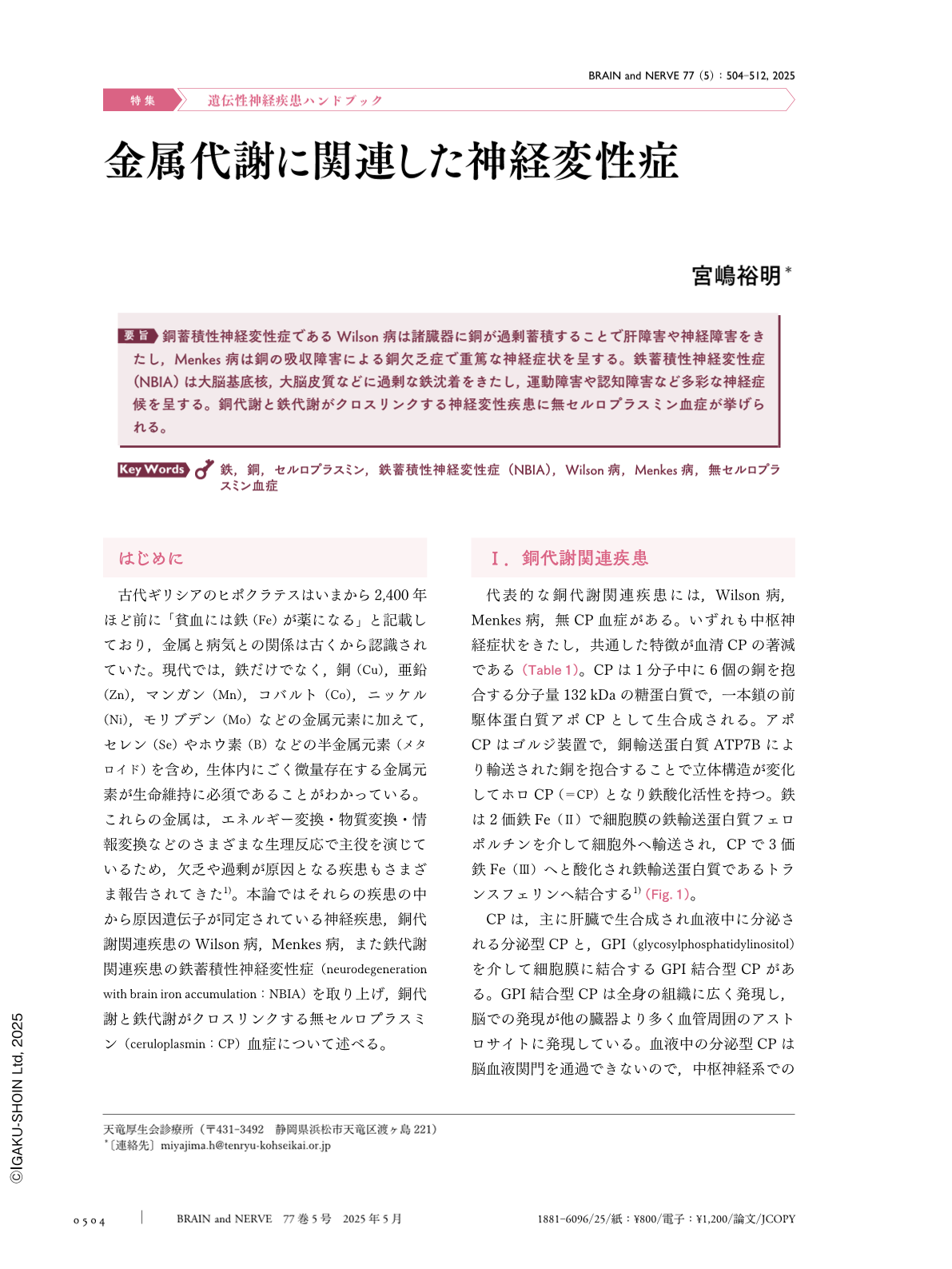Japanese
English
- 有料閲覧
- Abstract 文献概要
- 1ページ目 Look Inside
- 参考文献 Reference
銅蓄積性神経変性症であるWilson病は諸臓器に銅が過剰蓄積することで肝障害や神経障害をきたし,Menkes病は銅の吸収障害による銅欠乏症で重篤な神経症状を呈する。鉄蓄積性神経変性症(NBIA)は大脳基底核,大脳皮質などに過剰な鉄沈着をきたし,運動障害や認知障害など多彩な神経症候を呈する。銅代謝と鉄代謝がクロスリンクする神経変性疾患に無セルロプラスミン血症が挙げられる。
Abstract
Neurodegeneration with brain iron accumulation (NBIA) comprises a heterogeneous group of inherited neurodegenerative disorders collectively characterized by extrapyramidal movement disorders and abnormal iron accumulation in the nuclei of the deep basal ganglia of the brain. Ten NBIA genes have been identified. Aceruloplasminemia is a type of NBIA associated with copper metabolism. Ceruloplasmin contains 95% of the copper in human serum and plays an important role in iron efflux from mammalian cells. The relationship between ceruloplasmin and neurodegenerative diseases was revealed by a decrease in the serum ceruloplasmin concentration, which is characteristic of hepatolenticular degeneration with copper overload, in patients with Wilson's disease. Serum ceruloplasmin levels are typically decreased in patients with Wilson's disease, Menkes's disease (copper deficiency), and aceruloplasminemia. The molecular pathogenesis underlying different forms of neurodegeneration has provided new insights into the pathways of brain iron and copper metabolism.

Copyright © 2025, Igaku-Shoin Ltd. All rights reserved.


